Fighting Fitness & Recovery: Lee Scantalides
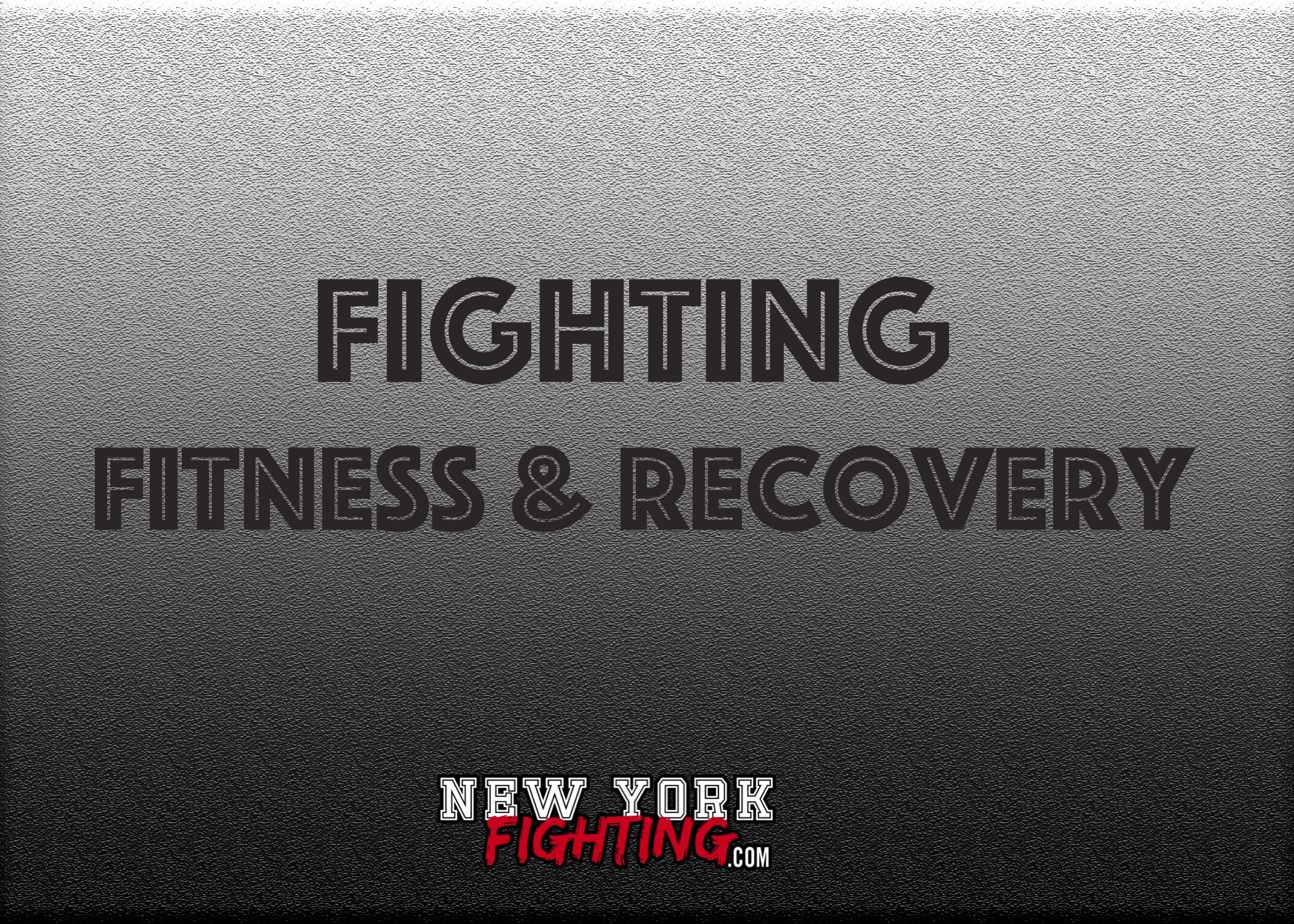
Fighting Fitness & Recovery brings together industry experts to give our readers guidance towards an injury free training experience. This week, Lee Scantalides gives us some insight on “preparation to maximize Muay Thai/BJJ training sessions and minimize risk of injury.”
In addition to getting a restful night’s sleep and monitoring one’s diet, athletes can take steps to ensure an energetic and injury-free training session.
Practicing as an outpatient orthopedic physical therapist, one of the most common oversights I see from patients is not warming up sufficiently prior to practice. Each sport has certain demands from athletes, Muay Thai/BJJ in particular is a high energy sport that requires a great deal of strength, power and endurance. If not appropriately primed, the athlete’s body will be more susceptible to injury and fatigue. It is not worth skipping a proper warm up, getting injured, then not being able practice for weeks at a time due to injury.
Before practice, implement basic ACTIVE stretches and MOBILITY drills to assist in a more specific preparation. Mobility differs from flexibility in how bones in a joint perform accessory motion (motion that we cannot voluntarily elicit, but that occurs during normal movement) rather than how far muscle can be stretched. Active stretching differs from passive stretching in how muscles can stretch during active contraction of opposing muscle groups, rather than a muscle simply being pulled to its maximal length. For example, active hamstring length will depend on how muscle fibers in the hamstring can lengthen under the contraction of the quadriceps/hip flexors (opposing muscle groups), such as during a kick.
To simplify a routine, the following areas are typically stiff and and lack mobility in the general adult population, due to the sedentary requirements of office jobs:
-Neck (cervical spine)
Neck: head nods in quadruped:
-Sit back into a child’s pose position with hands on the ground, elbows completely straight.
-Keep posture upright, nod head up and down, then side to side without altering any other body position.
-Repeat 10 times each direction, all movement should be full and painless.
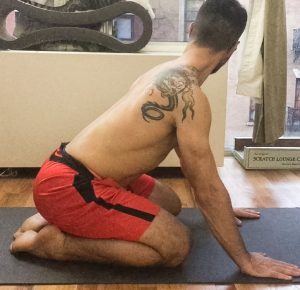
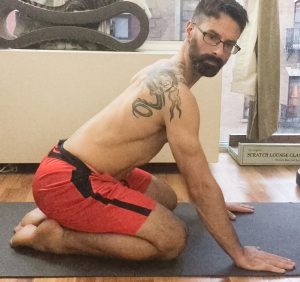

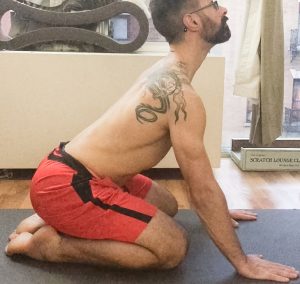
Neck: head nods in prone and standing
Head nods in prone:
-Lie on stomach, with elbows propped on the ground.
-Let your low back relax, and keep upper body upright.
-Nod head up/down, then side to side.
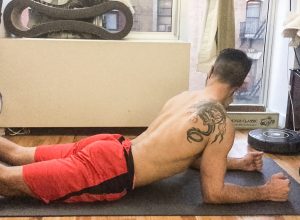
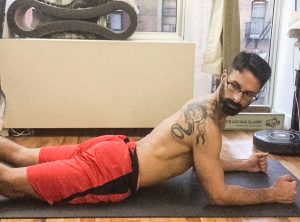
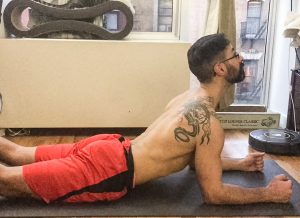
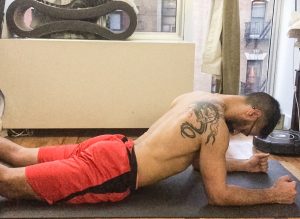
Upper back (thoracic spine)
Upper back (thoracic spine)
Upper back; quadruped rotation:
-Sit back into child’s pose position, place same side elbow in front of knee, other hand behind your ear.
-Rotate torso so that elbow with hand behind ear, points to the ceiling, then rotate downward until elbow touches floor gently.
-Repeat up/down 10-15 reps each side.
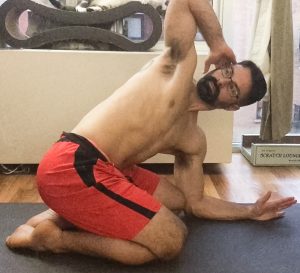
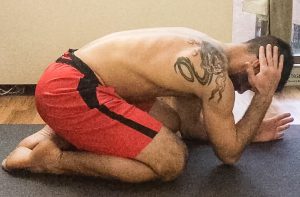
Low back: cat/cow & tail wags
Cat/cow:
-On hands and knees, round upper/lower back as much as possible, hold 3-5 sec’s.
-Then arch upper/lower back as much as possible, hold 3-5 sec’s.
-Movement should be full and painless.
-Repeat 20 reps.
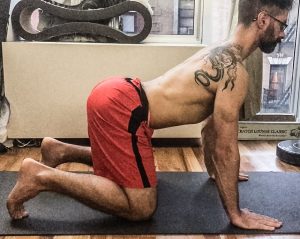
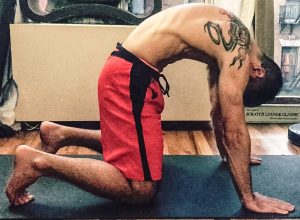
Hips: 90/90 stretch, kneeling hip flexor, quadruped hip CARs.
Low back (lumbar spine)
Upper back: quadruped rotation
Quadruped hip CARs (Controlled articular rotations):
-On hands and knees, press into the ground, keeping elbows straight, then tuck stomach into spine.
-Raise one leg to the ceiling with knee bent, without arching back.
-Then rotate leg as far as possible so that kneecap points away from your midline.
-Keeping leg in same position, slowly circle leg around till it is next to you, then return to starting position.
-Repeat 5 in one direction, then 5 in the other direction.
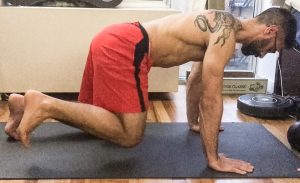
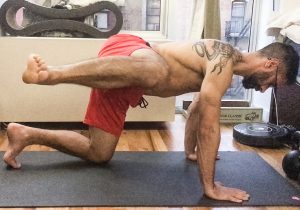
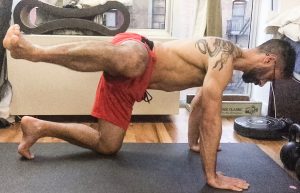
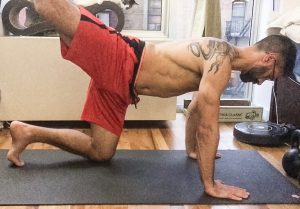
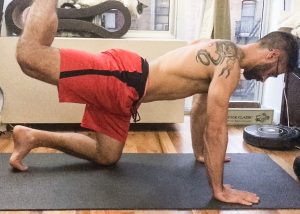
-Ankles
Ankle CARs:
-Seated with legs out straight and hands behind you.
-Bend ankle forward and backward with full range of motion.
-Then circle ankles around in each direction.
-Keep knees pointed to the ceiling to ensure isolated movement at ankle.
-Move slowly with maximal effort.
-Repeat 10 times in each direction.
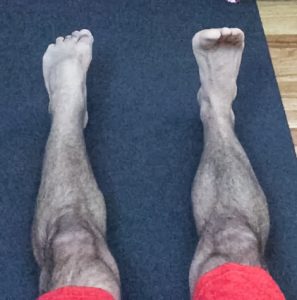
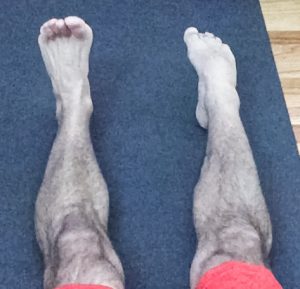
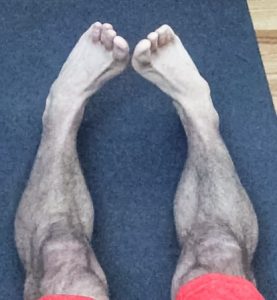
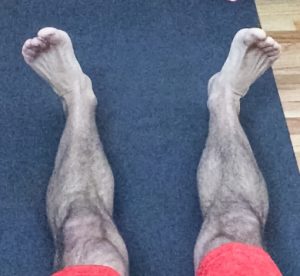
As you can see, the spine generally suffers from quite a bit of stiffness from sitting and minimal movement. As we develop, our spine is meant to compress, flex, extend, and rotate in any combination. As we grow older, we do less and less of all those movements, and our spine adapts to the lack of movement and flow. Making a proper specific warm-up routine imperative to keeping the body healthy and moving freely as one trains.
Writer: Lee Scantalides
PT, DPT, CSCS, NSCA-CPT, SFG I, FRCms
Doctor of Physical Therapy
Strength and Conditioning Specialist
StrongFirst Level I Instructor
Functional Range Conditioning Certified
